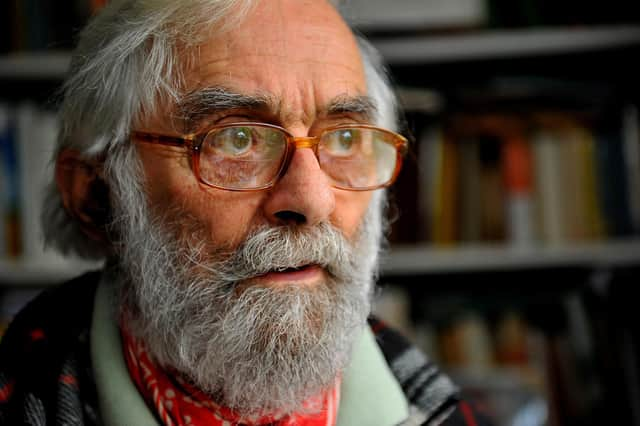Reader letter: Richard Williamson brought 'such treasures' to readers each week


In the death of Richard Williamson, Sussex has lost a much-loved naturalist.
Since the day he left Norfolk and crested the Downs on his motorbike at Duncton in 1963, Richard has written of the 'paradise' awaiting him here in West Sussex.
Advertisement
Hide AdAdvertisement
Hide AdDown a long green valley, passing flint-faced barns and up a narrow lane, milky with chalk dust, he arrived at Kingley Vale National Nature Reserve to take up his appointment as warden for the Nature Conservancy.
It was there I first met him in the mid-60s. I leant heavily on Richard in organising a visit for the Littlehampton Natural Science and Archaeology Society. Among the gnarled and ever-so ancient yew trees – the finest yew forest in Europe – Richard brought this magical place to life. Such passion and energy are a rare gift. No wonder the Observer's front page dubbed him 'Chichester's own David Attenborough'.
For over 50 years, week by week, readers of both the Observer and West Sussex Gazette have been privileged to follow Richard's insight into our local landscape and its wildlife.
Through his walks we've been offered so many little nuggets of local knowledge: of the track through West Dean Woods made with cinders brought all the way from Wales to ease the driving of carriages for royal shooting parties; where to hear nightjars and see one of the most magnificent colonies of wild daffodils in the south and where to find Prince Albert's golden-pipe organ in a little downland church. Such treasures Richard brought us each week. He loved discovering the curiosities of the countryside.
Advertisement
Hide AdAdvertisement
Hide AdLast year, Richard joined the campaign to save the last stretch of wilderness along the Felpham seafront, the Summerley greensward, the last remnant of wildlife in this form along the whole of the southern boundary of Felpham parish.
It was to be 'tidied-up'. Learning of this threat, Richard pointed out the importance of its wildlife, home to many wild flowers and of special interest for its vegetated-shingle plants.
He wrote to me that: “Every effort should be made to understand what is left of the beauty and rarity of the urban coastal-fringe flora to protect it. The mowing of what to the untutored eye looks an untidy mess of weeds... is one of the most damaging operations.” Even brambles in such places should be protected as 'one of the most prolific providers for insects'.
Sadly, Richard has not lived to see the outcome of this ongoing Felpham saga.
Advertisement
Hide AdAdvertisement
Hide AdRichard's enthusiasms and support for all that is good in the natural landscape and his ready willingness to share his vast knowledge through his books and the local press will be greatly missed.
To share your views, send letters of no more than 250 words with your name, address and daytime telephone number to [email protected], or post to The Observer, Metro House, Northgate, Chichester, West Sussex, P0191BE
